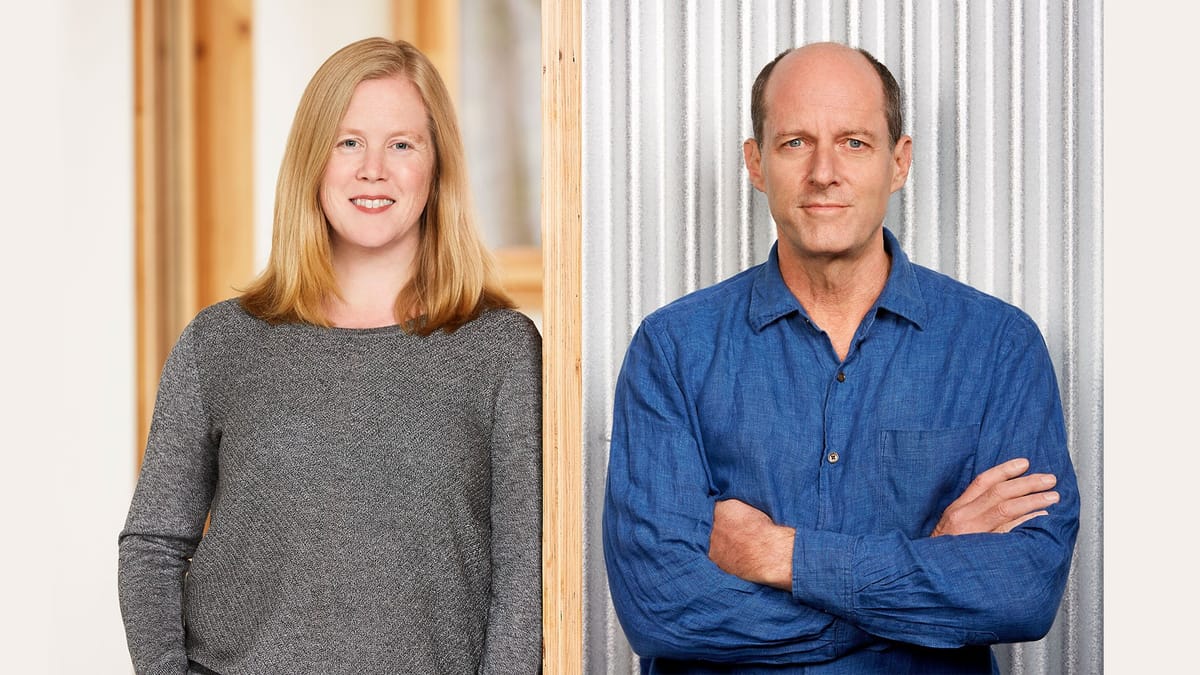Stephanie Bassler, RA, CPHC & Peter Reynolds of North River Architecture lead the way in vernacular Passive House design
Learning how to promote climate resilient and net-zero buildings with Passive House design standards.

Interview with Stephanie Bassler, RA, CPHC & Peter Reynolds of North River Architecture & Planning
Tell us a little about yourselves and the firm.
North River is a regional architecture firm in New York’s Hudson Valley specializing in net zero energy and resilient housing design that is also emotionally satisfying to live in and affordable to a range of incomes. We are a small team that punches above our weight, sometimes taking on large projects if we feel aligned with the energy goals. We recently completed 5 floors above Fifth Ave for a fashion brand in New York City. Eileen Fisher’s Creative Center is a LEED Gold-certified project that was an interesting test of our ideas in Manhattan.

Image Credit: Deborah DeGraffenreid
How does NRAP commit to the community, responsible energy consumption, and meaningful changes to how buildings can be conceived and built?
Our current path toward promoting climate resilient buildings starts with Passive House design standards as our baseline for achieving net zero energy for all new projects. In order to make this as easy as possible for clients and for the local building community, both of which need to buy in to this proposition, we have taken a few strategic steps. We design simple, low cost vernacular structures (i.e. barns and sheds) using standard stick frame wall sections. We hold workshops and open houses for the design and construction community on how to build Passive House structures within the knowledge base they already have. And we are willing to build such projects ourselves if necessary in order to provide more local examples and proofs of concept.

Image Credit: Deborah DeGraffenreid
Peter, after living in the Accord Passive House for a year what are the lessons learned?
For an efficiency-oriented person, I particularly crave self-regulating systems. In other words, I am not very good at maintenance and fiddling with knobs. Who knew that Passive House can essentially be so carbon-friendly even to hands-off owners like me, who just want to pull the door closed when they leave, and have the car waiting in the morning fueled from the roof?

Image Credit: Deborah DeGraffenreid
What do you think are some of the biggest challenges facing Passive House in the US?
The perception of additional, irretrievable building costs seems to be the biggest challenge to Passive House becoming the leading standard in the US building market. For North River, this has led us into an All Categories approach: from education of our contractor community, to using simple design types that clients with an artisanal approach to detailing find satisfying and that are appreciated in the community. And finally, to being willing to build them ourselves on a budget that makes sense economically for our clients if no one else will. We think there is a sweet spot here, still to be achieved by all stakeholders in this industry, and we are in pursuit of it with each new project that we take on.
One positive trend toward resolution is size: we are starting to see a new and growing appreciation for small spaces that are delightful to live in, and hit really high standards of energy efficient design. This small house movement is really well suited to our practice, it helps make Passive House more accessible to a broader market, and we are trying to demonstrate the benefits and pleasures of smaller homes with every project.

Image Credit: Deborah DeGraffenreid
…and what are some of the biggest opportunities?
On the optimistic side, we do feel that it won’t take many good projects with proven performance records to influence future energy design trends. Everyone has their ear to the ground now about least-cost and least-impact energy paths. As long as they are cool designs, of course, and have all the modern convenience and low-maintenance features, millennials have come to prioritize all these features together on a budget, and we are trying to deliver them. Perhaps this is actually the most promising aspect of all: that the incoming market of younger aspiring homeowners is coming into the market with lots of good instincts and education about appropriate scale, low carbon footprint, community-oriented living, and finding a good cultural fit for themselves.
